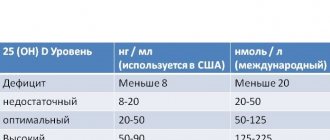Leukocytes and leukocyte formula
White blood cells, WBC or leukocytes are one of the varieties of its formed elements, which are a heterogeneous group in composition, characterized by the presence of a nucleus and the absence of a specific color. Leukocytes in men and women are contained in different quantities, but perform the same functions:
- Destruction of pathogens of infectious and inflammatory processes.
- Absorption and destruction of foreign elements in the blood (fragments of dead immune cells, atypical cells, own antibodies, etc.).
- Formation of immunity and immune memory.
- Fighting allergens that enter the body.
- Ensuring an adequate immune response;
- Phagocytosis of atypical cells and inhibition of tumor growth (NK cells).
White blood cells, synthesized by the bone marrow, act primarily as scouts, circulating freely throughout all tissues. Due to their small size, they easily penetrate into the intercellular space and, upon detecting a potential threat, destroy it.
Depending on their structure, there are granular leukocytes (these include eosinophils, neutrophils and basophils) and non-granular leukocytes - lymphocytes and monocytes. Each group of cells performs specific tasks. Some, for example, produce antibodies to foreign elements that enter the body, while others carry out their phagocytosis - absorption. In the process of fighting, WBC die, and the pus that forms in the foci of inflammation is precisely an accumulation of dead cells.
Of great diagnostic importance is not so much the high or low level of leukocytes in the blood of men, but the ratio of cell types. It is called the leukocyte formula and shows the number in each group. To determine the nature of the pathological process, concepts such as a shift of the formula to the right or left are used. The approximate percentage for an adult is as follows:
- basophils – up to 1;
- eosinophils – from 2 to 4;
- segmented neutrophils – 55-65, young – no more than 1, band neutrophils – from 1 to 5
- lymphocytes – 25-35;
- monocytes – from 3 to 8.
There are own medical terms for changes in the general quantitative indicator. Thus, an increase in the level of white blood cells is called leukocytosis, and a decrease is called leukopenia.
Read further: Leukocyte blood count and its norm and interpretation in adults and children
Why are some newborns diagnosed with leukocytosis?
Very often, infants are born with elevated leukocytes in the blood. The reason for this can be both a physiological phenomenon and a pathological one.
Healthy newborns and young children may have a physiologically elevated level of leukocytes in the blood, the value of which gradually decreases and reaches the levels of adults. This may be due to a slight oxygen deprivation that the baby experienced during childbirth.
But it happens that leukocytes are detected due to a congenital infectious disease. Therefore, they also look at other types of leukocytes.
There are five types of leukocytes: lymphocytes, neutrophils, monocytes, eosinophils, basophils. For example, if lymphocytes are elevated, this indicates a viral disease; if neutrophils are elevated, then there is a bacterial infection; if eosinophils are increased - an allergic reaction.
The more band neutrophils, metamyelocytes and myelocytes, the more severe the infection.
The norm of leukocytes in the blood of men
Reference values in a general blood test are the same for both sexes. The norm is an indicator ranging from 4 to 9x109 per 1 liter. However, its slight excess is often typical of men, which is not a reason for concern and is normal. The so-called physiological leukocytosis in representatives of the stronger sex develops when:
- Increased emotional stress. A woman’s body is more stress-resistant, including during a visit to the treatment room of a clinic.
- Physical activity. As a rule, men more often experience an increase in it, and accordingly, the number of leukocytes increases slightly.
- Eating high-calorie foods designed to replenish the body's resources after significant energy expenditure is another male feature.
- Smoking and drinking alcohol. Unlike ladies, representatives of the stronger sex more often have bad habits.
In women, leukocytosis of a physiological nature develops during pregnancy, as well as at the end of the menstrual cycle.
The normal norm for men by age in the table will help you figure out whether leukocytes are low or high.
| Age, years | Quantity, x109 per liter |
| Up to a year | 6-17,5 |
| 1-3 | 5-17 |
| 4-5 | 5-14 |
| 6-15 | 4-13 |
| Over 15 | 4-9 |
As can be seen from the above data, the number of white blood cells decreases with age. Indicators usually stabilize during adolescence and remain unchanged throughout almost the rest of life. Only in men over 60 years of age can a decrease be observed to values in the range from 3.8 to 8.6 x 109 / liter.
Causes of leukocytosis in women
When a woman is not pregnant, and tests show an increase in the number of white blood cells, then it is necessary to look for other reasons. It could be:
- the beginning and course of menstruation;
- being under severe stress;
- overheating in the sun before blood collection;
- the presence of vomiting and non-infectious pain;
- eating food before taking the test;
- inflammation of individual internal organs.
In addition, the presence of such diseases in women leads to an increase in leukocytes:
- appendicitis;
- otitis;
- sinusitis;
- some disturbances in the functioning of the intestines and skin diseases (the type of leukocytes such as eosinophils is increased);
- allergy;
- surgical complications.
What does it mean if an adult man has elevated leukocytes in the blood?
As already mentioned, leukocytosis can be of pathological or physiological origin. A significant increase in the content of white cells in the blood above the maximum permissible value of 9x109 per 1 liter occurs in the following cases:
- Aseptic or infectious inflammatory processes of various localizations.
- Radiation sickness in the initial stage.
- Physical or emotional exhaustion.
- Recent injuries, surgical interventions.
- Autoimmune pathologies.
- Allergic reactions.
- Extensive blood loss.
- Poisoning with certain chemical compounds (aniline, nitrobenzene).
- Side effects of certain medications, in particular antibiotics.
- Malignant neoplasms – cancerous tumors, as well as leukemia.
As a rule, in such conditions the number of WBC increases significantly, and in redistributive physiological leukemia the deviation from the norm is minimal. For example, a leukocyte count of 11 in the blood of an adult may indicate nervous or physical stress, overheating (going to the bathhouse or intense sunbathing). The level of white blood cells also increases after eating fatty, “heavy” foods, lack of fluid in the body, after drinking alcohol and smoking.
In order to exclude such distortions in the results, it is imperative to properly prepare for the blood test. To do this, you need to completely eliminate alcohol from your diet for three days, and refrain from overeating the day before (especially for high-calorie foods). Dinner should be light, and you should not have breakfast before donating blood from a finger prick.
The procedure is performed in the morning, and smoking and being nervous on this day is also undesirable. To prevent stress or physical activity from affecting the test result, you do not need to exercise before visiting the laboratory, but sit in the hallway for 15 minutes immediately before taking the sample.
If an increase in leukocytes in the blood of men is detected, the leukocyte formula is carefully studied. By which cells of a given group are more numerous, one can judge the nature of the pathology. For example, eosinophilic leukocytosis is usually a consequence of an allergic reaction, and basophilic leukocytosis serves as a marker of inflammation of the digestive system. The number of lymphocytes and monocytes increases during viral infections.
Growth of leukocytes during pregnancy and after childbirth
During pregnancy, a blood test shows elevated white blood cells, if you focus on the norms of a healthy person. The explanation is that the volume of blood needed by both the unborn child and his mother increases. Therefore, the leukocyte level norms for pregnant women are different in each trimester.
Elevated leukocytes occur during bacterial infections of the urinary system (pyelonephritis, for example), a recent acute respiratory viral infection, bacterial tonsillitis, bronchitis, eclampsia.
After childbirth, an increase in white blood cells may also be observed for physiological reasons. The reason mainly lies in blood loss during labor. But it may also be a matter of pathological processes occurring in the body of a postpartum woman:
- inflammatory processes in the uterus and genitourinary area;
- mastitis;
- pyelonephritis;
- endometritis.
Without additional tests and examination, it is impossible to determine for sure whether there is a danger to a woman’s health or not.
Reduced leukocytes in men's blood
Leukopenia poses a much greater danger to the body. A decrease in the number of white blood cells leads, first of all, to a sharp decrease in immunity, which contributes to the further development of pathology. In what cases is this phenomenon observed:
- Chronic infections, including such dangerous diseases as HIV and tuberculosis.
- Secondary immunodeficiencies.
- Lymphogranulomatosis is a malignant pathology of lymphoid tissue.
- Aplasia (failure syndrome) of the bone marrow, which is responsible for the production of leukocytes.
- Some forms of leukemia.
- Hypersplenism is a special symptom complex that develops as a result of hyperfunction of the spleen and is manifested, in particular, by a reduction in the number of formed elements.
Often, white blood cells are low in adults due to chronic stress. This condition affects the functioning of all organs and their systems, including the quantitative indicators of blood.
Non-hazardous reasons
The number of leukocytes in a man’s urine may be increased for physiological reasons. This condition is not associated with illness and does not threaten the life and health of a man. The following reasons may have a negative impact:
- Prolonged abstinence from going to the toilet. This provokes a change in the functionality of the walls of the ureters, and there is a disruption in the normal process of urination.
- Abuse of unhealthy foods and alcoholic beverages.
- There may be many leukocytes in the urine of a person who regularly experiences excessive physical or psychological stress.
- Frequent hot baths.
- Dehydration of the body. The problem can occur with excessive physical activity accompanied by increased sweating. Dehydration also occurs with prolonged vomiting or diarrhea.
- Violation of personal hygiene standards. Irritation and diaper rash on the mucous surfaces of the penis cause an increase in the number of blood cells in urine.
- Taking certain medications. Diuretics, anti-tuberculosis, non-steroidal anti-inflammatory drugs, as well as medications that suppress the activity of the immune system have a highly negative effect.
Such reasons are easily eliminated. After this, the composition of urine quickly returns to normal. No treatment is required.
Often, leukocytes in urine are slightly elevated in men aged 30 years. This is a consequence of the onset of hormonal changes.
What to do if there are deviations from the norm?
First of all, there is no need to worry and try to search for and treat possible diseases on your own. It is necessary to exclude the possibility of the influence of third-party factors that have nothing to do with the pathology. If a man regularly plays sports or works physically, then a slight deviation in the direction of increasing indicators may be a variant of the norm. In addition, representatives of the stronger sex are more prone to overeating and more often have bad habits.
If the recommendations for preparing for the analysis were followed, but leukocytes are still elevated in an adult man, this indicates a possible disease. There is no point in guessing about which one - you need to go to the doctor for a diagnosis. A result below the acceptable minimum requires even greater responsibility. It indicates a decrease in immune defense, which can have serious health consequences. Immediate contact with a specialist and additional examinations will help to promptly identify and eliminate the cause of the pathology.
Read further: Norm of leukocytes in urine, reasons for the increase in women and men, prevention
- about the author
- Recent publications
Infectious disease doctor of the highest category with extensive experience. Specializes in the treatment of infectious diseases of various etiologies, methods of laboratory diagnosis of biomaterial. More details
How to lower your white blood cell count
You can lower the level of leukocytes with antibiotics or special drugs that treat the identified disease. Antibacterial, anti-inflammatory, and chemotherapy drugs are usually prescribed. Sometimes the doctor resorts to leukapheresis - removing excess leukocytes from the bloodstream using a special separator.
If the leukocyte content in the analysis is 11–12 G/l, it is better to retake the blood. A slight increase may be caused by eating on the eve of laboratory tests, physical activity, or a nervous disorder. An increase in white blood cells may occur after taking a hot bath. In all these cases, there is no need to treat the person.
In what diseases is the leukocyte count elevated? Any inflammatory, especially purulent process, burn intoxication, necrosis during a heart attack causes such changes in the blood test.
In severe purulent infections and sepsis, the rate can range from 25 to 30 G/l. In oncological diseases (especially the blood system), leukocytosis is even higher.
Other pathologies
Experts identify a number of other diseases that can cause the detection of leukocytes in a urine sample:
- Appendicitis is inflammation of the appendix. This problem cannot be ignored, as it is accompanied by vivid, painful symptoms. Pain in the lower abdomen intensifies with movement, attacks of nausea and dyspeptic disorders appear.
- Allergy. White blood cells in a man's urine may increase due to an allergic reaction of the body to toxic substances. At the same time, urticaria, rhinitis, and digestive disorders appear. In this case, the sources of blood cells are the urinary tract.
- Diabetes. Urinalysis for this disease becomes a mandatory part of regular examinations. The detection of leukocytes in it indicates vascular damage, which occurred due to high concentrations of sugar in the blood.
- Lupus erythematosus. This disease can be detected by redness appearing on the face, changes in body temperature, headaches and muscle pain. Hair loss, deterioration in the quality of nails, and swelling are also noted.
- Rheumatoid arthritis. With this disease, the joints are affected, primarily the hands. The progression of arthritis leads to impaired kidney function, which affects the level of leukocytes in the urine.
What specific disease caused the problem will be determined during a medical examination. First of all, a man should see a therapist. He will be able to select the correct diagnostic methods and refer you for consultation to the right specialist.
How to keep wbc normal
To prevent the development of leukocytosis, it is necessary to promptly treat parasitic and viral diseases, various bacterial infections, and ensure that there are no inflammatory processes. For each of these diseases, the doctor selects medications for the patient individually.
For leukopenia, doctors use the following drugs:
- Leukogen;
- Batilol;
- Sodium nucleinate;
- Pentoxyl;
- Pyridoxine;
- Etaden.
Medicines must be used strictly according to the doctor's instructions. Antibiotics and medications should not be used other than as prescribed by the attending physician. This can be dangerous and will lead to the development of dangerous diseases over time.
A man should lead a healthy lifestyle, follow a sleep and physical activity schedule. Bad habits can help reduce the number of leukocytes in a man’s blood, so you should stop smoking and drinking alcohol. It is necessary to drink enough water per day - about 2 liters. This will help prevent a decrease in the number of white blood cells.
There is often an increase after 50 years, which occurs due to the consumption of salty, fatty, fried, smoked and other harmful foods. In order for leukocytes to always be normal, you need to monitor your health and strengthen your body. Pouring cold water is suitable for this. A hardened body better resists diseases and destroys foreign tumors and inflammation.
In order for white blood cells to be normal in adulthood, you need to eat a lot of healthy and nutritious foods, foods that are colored red. It is advisable to steam vegetables without fat. Fruits that contain vitamin C will be beneficial for older people.
Oxygen has a beneficial effect on the level of leukocytes in the blood. You need to spend as much time as possible outdoors, even in winter. You need to walk more often. People who constantly lead a sedentary lifestyle often suffer from leukocytosis.
A large amount of stress can cause leukocytosis. To prevent this from happening, you need to protect yourself from the influence of stress, bring positive emotions into your life, and enjoy every day.
Lack of sun also negatively affects human health, therefore the level of constituent blood particles decreases. Doctors studied a group of patients and concluded that men who do not get enough vitamin D have problems with white cells. The sun has a beneficial effect on the level of these particles, and the sun's rays help fight various viral and respiratory diseases.
It is also important to undergo timely examination to identify the problem at an early stage. The sooner a man detects a violation of the particle norm, the sooner the doctor will prescribe treatment and help the patient
Excessive salt intake can reduce cell count because... Blockages form in the blood vessels and blood circulates more slowly.
Various chronic diseases lead to the fact that the risk of an increased or decreased number of particles increases by 2 times, even if a man leads a healthy lifestyle and plays sports. Viral diseases harm the body's immunity, reducing the number of white cells that fight the virus.
Genetically modified products from supermarkets affect the condition and number of leukocytes in a man’s blood. Therefore, you need to eat only natural products.
Decoding the results
Depending on whether the level of leukocytes in the male body is increased or decreased, the doctor can make a diagnosis. It is worth remembering that the number of these cells can be influenced not only by internal, but also by external factors.
Here are some of them:
- exercise stress;
- Times of Day;
- the presence or, conversely, absence of food in the stomach;
- emotional condition;
- bad habits;
- prolonged exposure to the sun.
The condition when there are too many white blood cells in the blood is called leukocytosis. The opposite is called leukopenia.
If the transcript showed leukocytosis, one can judge the development of serious pathologies:
- infections;
- kidney diseases, for example, pyelonephritis;
- pneumonia;
- appendicitis;
- viral diseases;
- tonsillitis;
- fungus;
- stroke or myocardial infarction;
- malignant neoplasms;
- disorders of the bone marrow;
- radiation sickness;
- burns;
- bleeding;
- injuries;
- poisoning;
- ear infection;
- coma with diabetes mellitus;
- inflammation of the prostate gland.
Often, wbc levels increase in those men who are prone to allergies or have experienced autoimmune diseases.
Several factors can lead to an increase in the number of white blood cells.
- Unbalanced diet.
- Frequent stressful situations and unstable emotional state.
- Too much physical activity.
- Long-term use of certain medications, such as antibiotics or glucocorticoids.
Ignoring leukocytosis can have serious consequences. One of them is cancer. Leukocytes begin to mistake the cells of their body for foreign ones and try to destroy them. Because of this, the immune system and internal organs, in particular the bone marrow, malfunction. The consequences are disturbances in the process of formation of leukocytes, which provoke the occurrence of blood cancer. In this case, the only way to improve the condition is to undergo a bone marrow transplant from a healthy donor. If this is not done, over time, almost all organs will stop working, and death will occur.
Antibiotics will help reduce the number of white blood cells in men. They must be prescribed by a doctor. It is worth remembering that self-medication can only worsen the condition.
In some cases, a special diet may improve the condition.
According to it, the basis of the diet should be the following products:
- beet;
- fish (preferably red);
- meat (low-fat varieties);
- seaweed;
- honey;
- cereals;
- milk and dairy products.
Leukopenia or a decrease in the level of white blood cells in the male body is a symptom of many disorders:
- flu;
- hepatitis;
- typhus;
- malaria;
- arthritis;
- bacterial infections;
- hypersplenism syndrome;
- failure of the endocrine system;
- hypothyroidism;
- purulent-septic inflammation;
- anemia;
- oncology of blood or bone marrow;
- damage to stem cells.
What external factors can lead to a decrease in wbc level?
This:
- Prolonged stress.
- Depression.
- Uncontrolled use of drugs.
- Poor nutrition.
- Exhaustion of the body.
- Vitamin deficiency and deficiency of minerals and trace elements.
Leukopenia reduces the body's protective functions, making the male body vulnerable to most diseases.
If the transcript of the analysis showed leukopenia, it is necessary to identify the cause of the development of this disease. Only after this the doctor will prescribe treatment. As with leukocytosis, you should not treat yourself.
Leukocytes are an important component of blood. By their quantity in the male body, serious diseases can be identified and cured. The norm of leukocytes is determined by the age of the man. The older he is, the smaller their number.
Rules for taking urine tests
In order for a urine test to show the correct result, it must be properly prepared. In this case, the following recommendations must be observed:
- You can collect urine only in the first 2 hours after waking up in the morning.
- To collect samples, use a sterile jar or special container.
- Before collecting urine, the genitals are toileted.
- If a urine test is prescribed according to Nechiporenko’s method, then only the average portion of morning urine is collected.
- The shelf life of the collected liquid is no more than 4 hours, so it must be sent to the laboratory as soon as possible.
Mandatory requirements when taking tests include mandatory abstinence from alcoholic beverages and, if possible, medications the day before the test. Otherwise the result will be incorrect.
The appearance of leukocytes in the urine does not always mean the development of the disease. Often it is enough to simply adjust your lifestyle and the composition of urine will normalize. At the same time, it is important to eat right, spend more time in nature, carefully monitor hygiene, avoid hypothermia, and refuse promiscuity. If any alarming symptoms appear, seek medical help immediately.
source
Kidney diseases
An increased content of leukocytes in the urine can result from the development of dangerous diseases. A large number of white blood cells in a urine sample often indicates impaired kidney function. Among the most common diseases are:
- Glomerulonephritis is an inflammatory process, the focus of which is located in the renal parenchyma. Blood enters the urine through the affected ducts.
- Pyelonephritis. The disease is associated with inflammation of the kidney tissue. It occurs in an acute form. Accompanied by severe pain, increased body temperature, and chills.
- Kidney tuberculosis. The problem is associated with infection getting inside the kidney. In an advanced state, severe pyuria is noted.
- Amyloidosis. This disease is characterized by protein deposition in the kidneys. Gradually, it begins to replace healthy tissue, which leads to loss of organ functionality. In the first few years, a urine test may show nothing. Symptoms appear after the disease progresses.
- Paranephritis. The focus of inflammation in this disease is located in the perinephric tissue. More often, this problem becomes a consequence of improper treatment of pyelonephritis. The infection can also be transmitted from the colon, which borders the tissue.
- Cyst in the kidney. An increased level of leukocytes is observed if the neoplasm has grown to such a size that it disrupts the normal outflow of urine.
Late diagnosis or improper treatment of such diseases leads to the fact that the kidneys lose their ability to cleanse the body of harmful substances. The result is severe intoxication of the body, which can be fatal.











